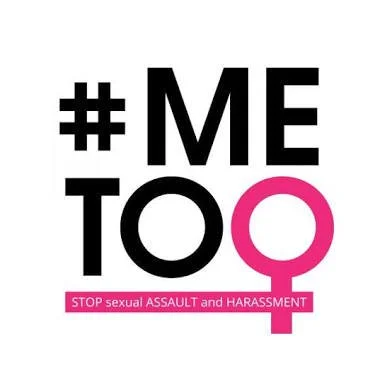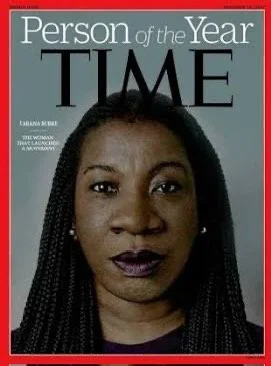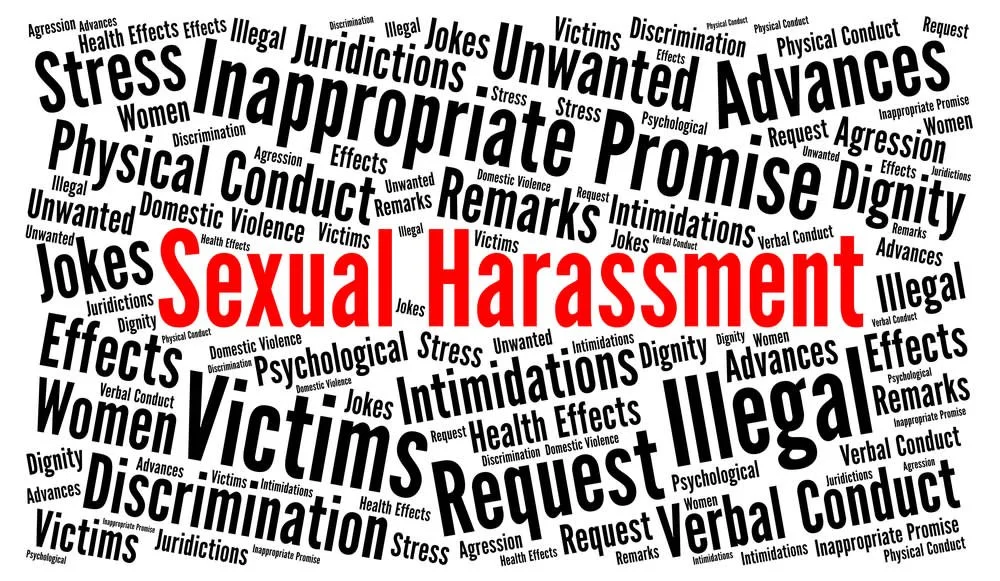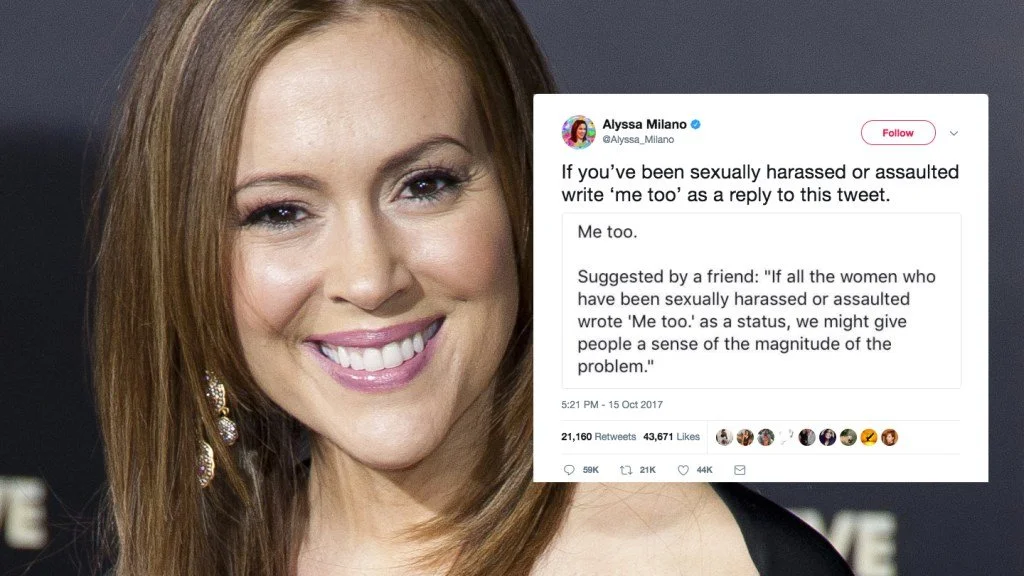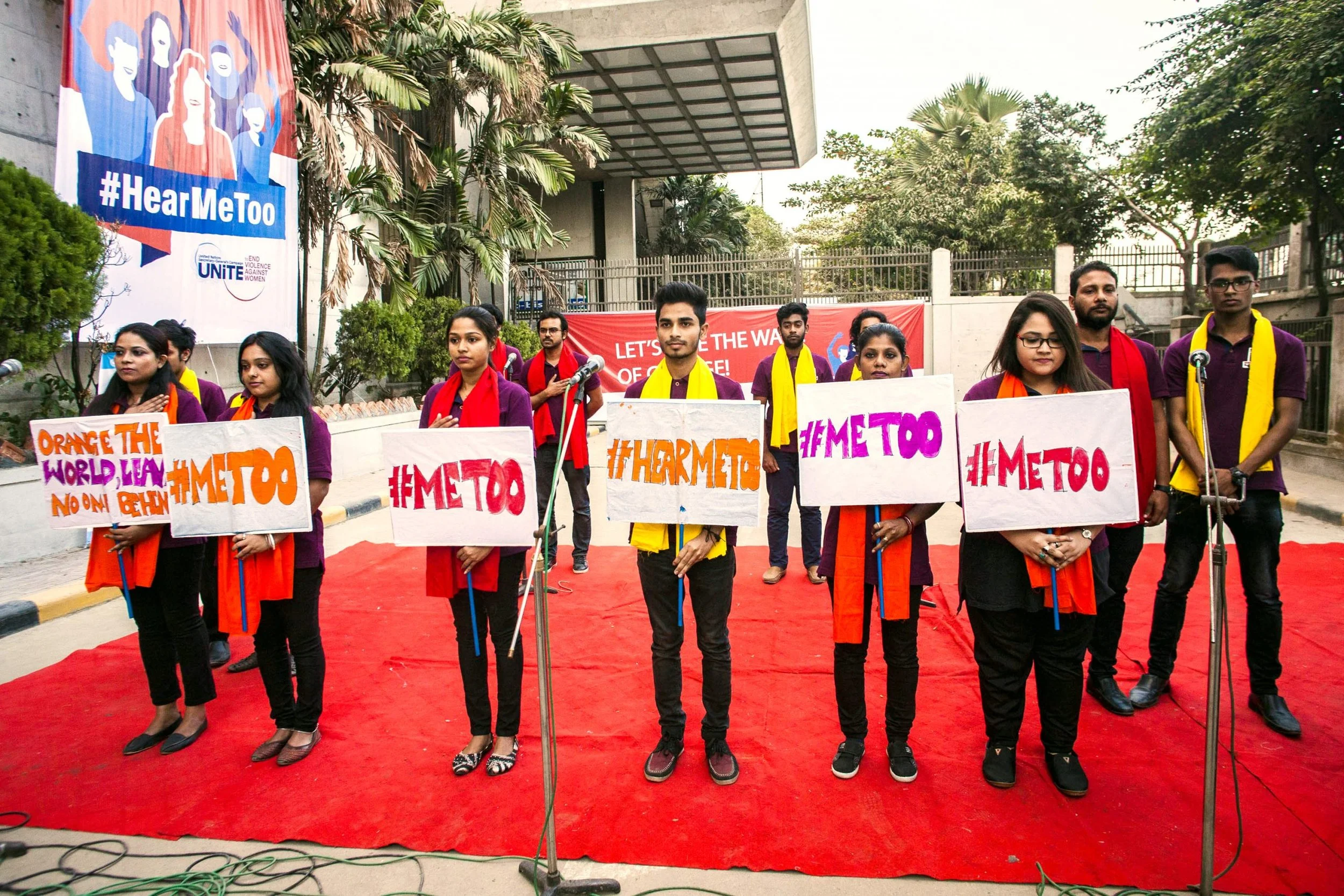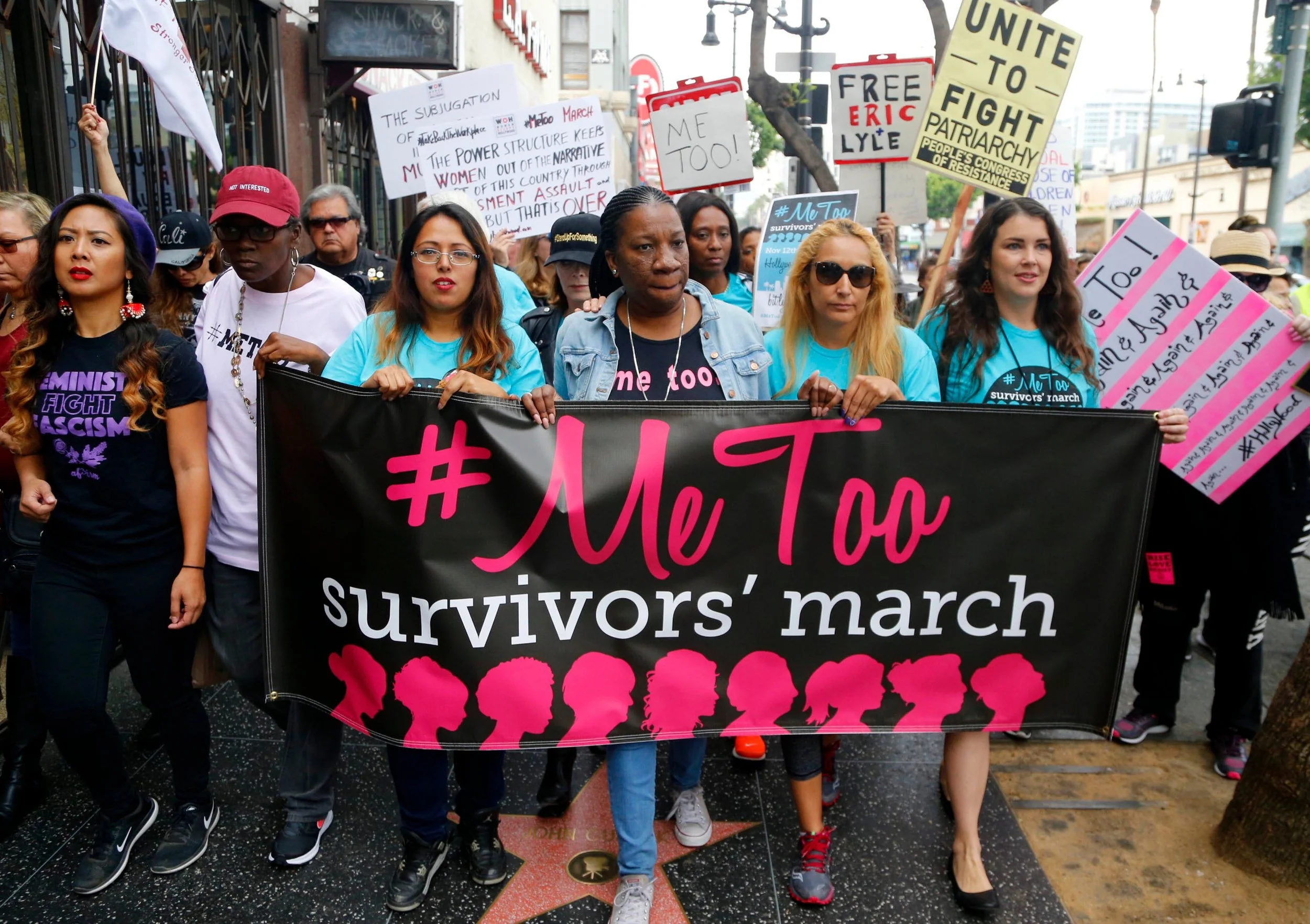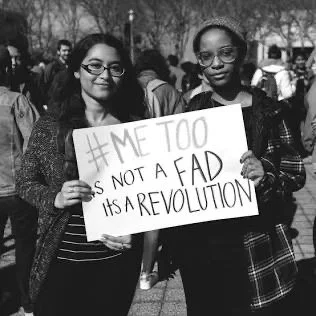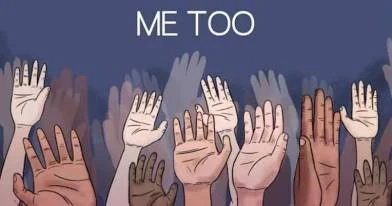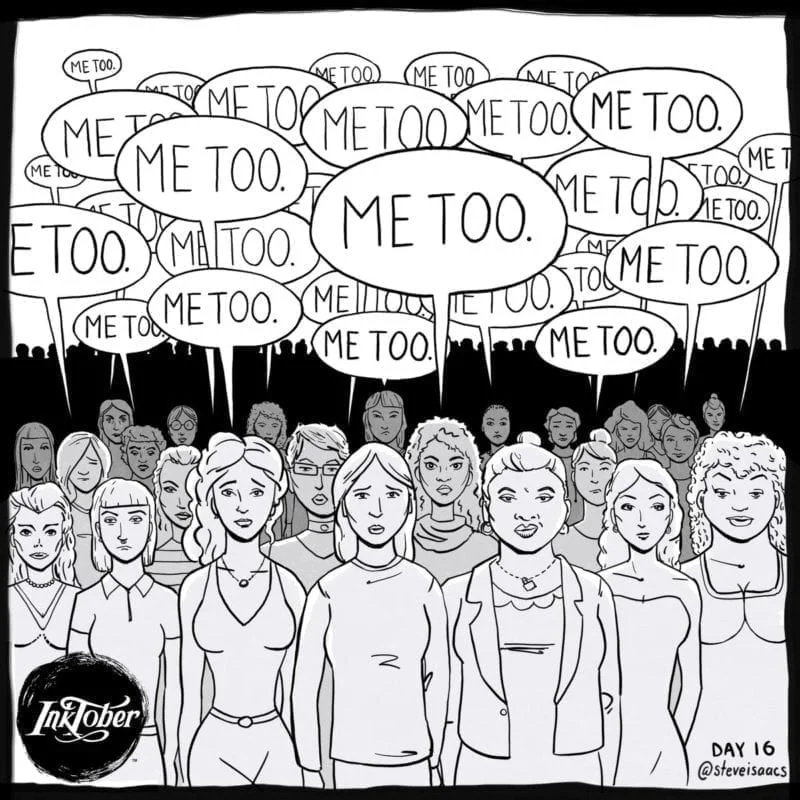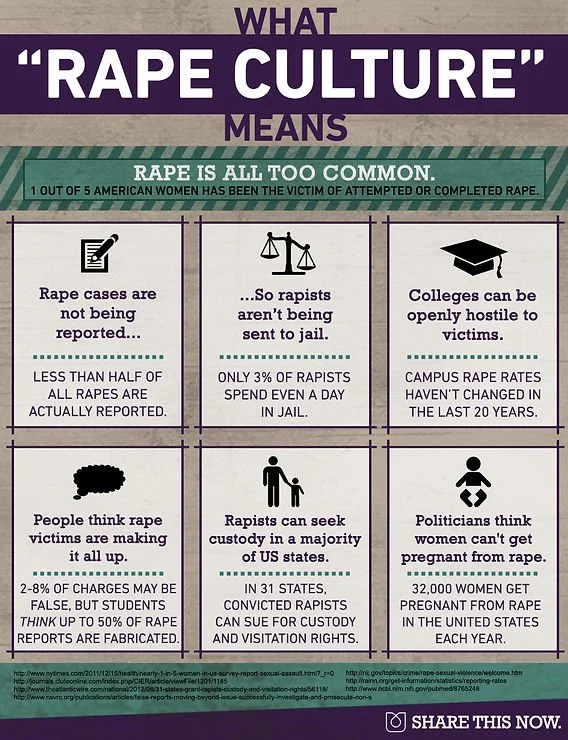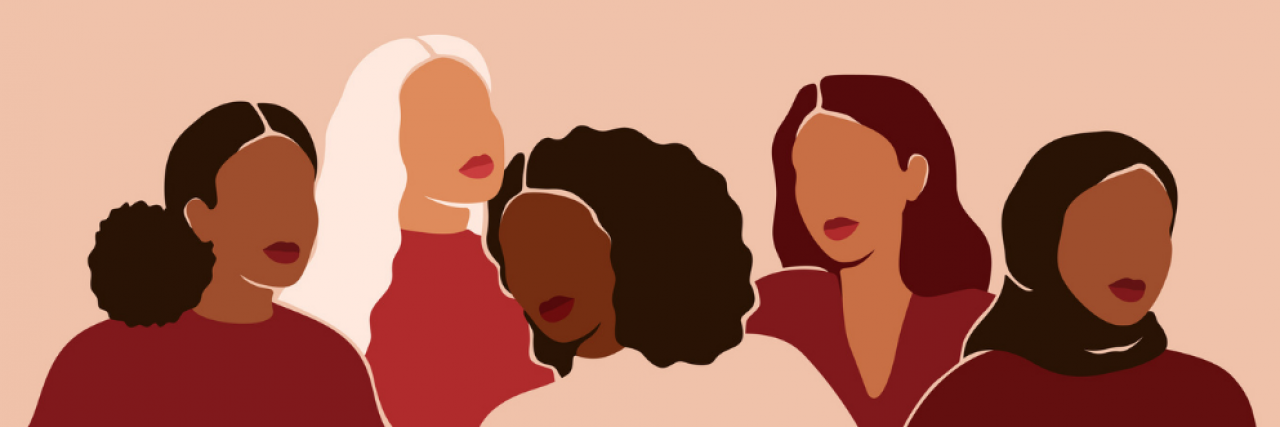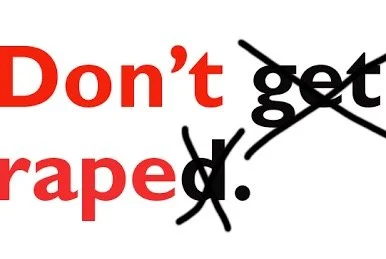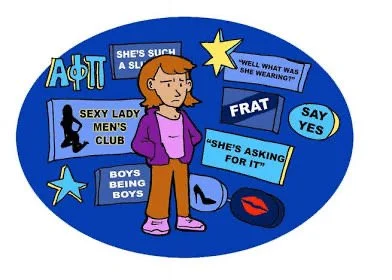The #Me Too Movement And Beyond
Mini-Series Part Two
THE BRIDGE
The Third Wave—the #MeToo Movement—Fourth Wave Feminism
What counts as sexual assault?
I have a booklet entitled: “NOBODY TOLD ME IT WAS RAPE’[*]
Do we know what rape culture is?
Do we know its roots?
Do we know how to combat it?
Do we really?
As stated in Part One of this mini-series, the 1991 Anita Hill-Clarence Thomas hearings raised public awareness of sexual harassment in the workplace, ultimately paving the way for the third wave of feminism with its focus on violence toward women..
Within that third wave, survivor and activist Tarana Burke founded the Me Too Movement (written as ‘me too.’ Movement) in 2006 to help other survivors of sexual assault.
Tarana Burke
‘Me too.’ is a social movement and awareness campaign against:
—Sexual abuse
—Sexual harassment and rape culture, in which women publicize their experiences of sexual abuse or sexual harassment. (Emphasis is mine)
That format of publicizing abuse experiences created a fertile seed-bed within the third wave era for what many would have identified as an unusual viral social media outpouring 11 years later—directly into the fourth wave of feminism.
The simple content of those viral seeds (or tweets) were the now-familiar two words: “me too.”
No one would have anticipated the speed at which those two words were carried by the winds of social media.
They were swept up from their base in the third wave, and went out in tweets that entered into the heart of the fourth wave.
The ‘me too.’ Movement could be called “the bridge between the waves.”
HOW DID ALL OF THIS HAPPEN?
From the me too. website: https://metoomvmt.org
While the phrase "Me Too" was first used in 2006 by Tarana Burke, the allegations of sexual misconduct against film producer Harvey Weinstein and the subsequent viral tweet, “me too,” by actress Alyssa Milano in October 2017, are what really propelled the movement into global attention.
On October 15, 2017, actress Alyssa Milano tweeted;
“If you've been sexually harassed or assaulted write 'me too' as a reply to this tweet."
The tweet went viral, sparking a massive social media response and a cultural turning point for the ‘me too.’ Movement.
In 2017, [when] the #metoo hashtag went viral, [it] woke up the world to the magnitude of the problem of sexual violence.
What had begun as local grassroots work had now become a global movement…. Within a six-month span, our message reached a global community of survivors.
Suddenly there were millions of people from all walks of life saying “me too”. And they needed our help.
Drawing by Steve Isaacs
Steve Isaacs’ Inktober #MeToo Cartoon
‘…It started with just a few mentions on Twitter, then more and more, then later on Facebook, I was shocked to see an entire ocean of #MeToo’s from friends, colleagues, and family. It was just everywhere.’ —[Steve Iaacs]
After seeing the movement’s scale so up close, [Isaacs] decided to skip the month’s [Inktober] prompt and illustrate what he was seeing.
Isaacs doesn’t have experience with sexual harassment or assault, but what struck him to create was the scale of his own friends’ acknowledgments of the Me Too Movement.
[Inktober is a monthly online drawing challenge.]
What was Next?
Surviving Sexual Assault, Going Forward from the Trauma, and Creating Change in the Process of Healing
From the ‘me too.’ website:
The ‘me too.’ Movement believes in the radical possibilities of a movement against sexual violence, led by survivors of sexual violence.
When survivors channel their unique empathy in community with one another, and in service of a future free from sexual violence, that’s when change happens.
As survivors we have the knowledge, skill, experience, imagination, vision, and creativity to identify, address, and bring radical transformation to our communities and institutions.
Beyond The Hashtag
In 2017, survivors’ voices erupted a movement, forcing our country to grapple with its ever-present rape culture problem. (Emphasis mine)
Four years later, we have created spaces for people to tell their truths, have difficult conversations, and for survivors to find community.
We’re going #BeyondTheHashtag and amplifying the work being done to disrupt rape culture.
The vision? Asserting that the transformation of oppressive systems, narratives, and cultures—grounded in survivors’ lived experiences and leadership—fosters generative solutions, practices, and relationships.
Today, our work continues to focus on assisting survivors…, [b]ut we’re also galvanizing a broad base of survivors, and working to disrupt the systems that allow sexual violence to proliferate in our world.
This includes:
—insisting upon accountability on the part of perpetrators
—along with the implementation of strategies to sustain long term, systemic change.
So that one day, nobody ever has to say “me too” again.
—metoomvmt.org
LET’S TAKE A DEEPER LOOK:
JUST EXACTLY WHAT IS RAPE CULTURE?
BELOW ARE A FEW HIGHLIGHTS FROM A TREASURE TROVE OF INFORMATION FROM TWO OF MANY OTHER SOURCES:
Southern Connecticut State University (SCSU), which has excellent coverage that addresses this question.
UN WOMEN (UNITED NATIONS), which offers 16 ways to combat rape culture.
SCSU:
Following are article highlights.
However, clicking the link below will lead to specific and important details and facts.
What is Rape Culture?
Rape Culture is an environment in which rape is prevalent and in which sexual violence is normalized and excused in the media and popular culture.
Rape culture is perpetuated through the use of misogynistic language, the objectification of women’s bodies, and the glamorization of sexual violence, thereby creating a society that disregards women’s rights and safety.
Examples of Rape Culture
Blaming the victim (“She asked for it!”)
Trivializing sexual assault (“Boys will be boys!”)
Sexually explicit jokes
Tolerance of sexual harassment
Inflating false rape report statistics
Publicly scrutinizing a victim’s dress, mental state, motives, and history
Gratuitous gendered violence in movies and television
Defining “manhood” as dominant and sexually aggressive
Defining “womanhood” as submissive and sexually passive
Pressure on men to “score”
Pressure on women to not appear “cold”
Assuming only promiscuous women get raped
Assuming that men don’t get raped or that only “weak” men get raped
Refusing to take rape accusations seriously
Teaching women to avoid getting raped
A FEW HIGHLIGHTS: CONCEPTS FROM THE SCSU ARTICLE:
—It is NOT the victim’s fault or responsibility to fix the situation; it is the abuser’s choice.
—The large majority of offenders who assault their partners control their violence with others, such as friends or work colleagues, where there is no perceived right to dominate and control.
—Sexual assault is NEVER the victim’s fault.
—Reported sexual assaults are true, with very few exceptions. According to CONNSACS [Connecticut Sexual Assault Crisis Services, Inc.], only 2% of reported rapes are false. This is the same rate of false reporting as other major crime reports.
—Sexual assault is motivated by hostility, power and control. Sexual assaults are not motivated by sexual desire.
—How Can Men and Women Combat Rape Culture and Victim Blaming?
Avoid using language that objectifies or degrades women
Speak out if you hear someone else making an offensive joke or trivializing rape
If a friend says they have been raped, take your friend seriously and be supportive
Think critically about the media’s messages about women, men, relationships, and violence
Be respectful of others’ physical space even in casual situations
Let survivors know that it is not their fault
Hold abusers accountable for their actions: do not let them make excuses like blaming the victim, alcohol, or drugs for their behavior
Always communicate with sexual partners and do not assume consent
Define your own manhood or womanhood. Do not let stereotypes shape your actions.
Be an Active Bystander!
OTHER SECTIONS FROM THE SCSU ARTICLE:
—Victim Blaming
—Why is it Dangerous?
—What Does Victim Blaming Look Like?
—Dating and Domestic Violence Facts
—Sexual Assault Facts
Adapted from Marshall University and Center for Relationship Abuse Awareness
UN Women (United Nations)
16 ways you can stand against rape culture
Date: Monday, 18 November 2019
Originally published on Medium.com/@UN_Women
BELOW ARE SECTIONS FROM THE UN WOMEN SUGGESTION SHEET:
—“Boys will be boys.”
—“She was drunk.”
—“Women say “no” when they mean “yes.”
—Rape culture is pervasive. It’s embedded in the way we think, speak, and move in the world. While the contexts may differ, rape culture is always rooted in patriarchal beliefs, power, and control.
—Rape culture is the social environment that allows sexual violence to be normalized and justified, fueled by the persistent gender inequalities and attitudes about gender and sexuality.
—Naming it is the first step to dismantling rape culture.
—Every day we have the opportunity to examine our behaviours and beliefs for biases that permit rape culture to continue. From the attitudes we have about gender identities to the policies we support in our communities, we can all take action to stand against rape culture.
Here are headings of UN Women’s 16 Ways You Can Do Your Part.
EXPAND HERE to gain access to full descriptions.
1. Create a culture of enthusiastic consent.
2. Speak out against the root causes.
3. Redefine masculinity.
4. Stop victim-blaming.
5. Have zero tolerance.
6. Broaden your understanding of rape culture.
7. Take an intersectional approach.
8. Know the history of rape culture.
9. Invest in women.
10. Listen to survivors.
11. Don’t laugh at rape. (Emphasis mine)
12. Get involved.
13. End impunity.
14. Be an active bystander.
15. Educate the next generation.
16. Start—or join—the conversation.
If you do wish to join the conversation, here is an expansion of #16:
16. Start—or join—the conversation.
Talk to family and friends about how you can work together to end rape culture in your communities.
Whether it’s hosting a conversation club that unpacks the meaning of masculinity, fundraising for a women’s rights organization, or joining forces to protest rape-affirming decisions and policies, it will take all of us to stand united against rape culture.
You can join the conversation online right now by following: #Orangetheworld and #GenerationEquality.
Giambologna, Abduction of a Sabine Woman, 1581-83, marble, 410 cm high (Loggia dei Lanzi, Florence)
Below are photos I snapped of the sculpture when my husband Bruno and I visited Florence, Italy in 2016.
I specifically wanted to capture its location—a public square—and the proximity of the people (tourists?) who were enjoying an aperitif with friends, seemingly unperturbed by the image above them.
An example of rape culture?
*What is rape exactly?
Here is a definition from Rape Crisis England & Wales.
Rape is often described as unwanted, forced or non-consensual 'sex'. But sex and rape are two very different things. If there is no consent, then it's not sex, it's rape – no matter the circumstances.
U.S. organization, RAINN (Rape, Abuse & Incest National Network), offers a definition.
Rape is a form of sexual assault, but not all sexual assault is rape. The term rape is often used as a legal definition to specifically include sexual penetration without consent. For its Uniform Crime Reports, the FBI defines rape as “penetration, no matter how slight, of the vagina or anus with any body part or object, or oral penetration by a sex organ of another person, without the consent of the victim.”
Also: To see how your state legally defines rape and other forms of sexual assault, visit RAINN's State Law Database.
ADDENDUM:
A reader was moved by this post and in October 2025, she sent us an email at info@cwed.org. She wrote:
—the voice cwed.org gives to women
Hi As someone who deeply cares about women’s rights and who has personally seen how unsafe the world can feel for women, it's struck me hard that in 2025, women still face violence and harassment every single day in many places. This danger has become so “normal” that it often goes unreported.
Reading this research about women’s safety worldwide hit me hard, but it also gave me hope that awareness can lead to change:
https://www.safetydetectives.com/blog/womens-safety-research/
Your piece, [The #Me Too Movement And Beyond]
https://cwed.org/blog/the-metoo-movement-mini-series-part-two
also gave me strength, showing that more of us are raising our voices. Since both touched me deeply, I wanted to suggest adding this resource to your article. Will you consider it? Thank you for all the heart you put into your work; it truly matters. ❤️ Warmly, Isabelle
Isabelle’s additional message: The resource I mentioned is from SafetyDetectives.com, a respected online privacy and security website that also publishes research on global safety and awareness topics, including this piece on women’s safety.
IN YOUR OWN WORDS:
Previews of Current Post (me too.), 5/12/2025
—”Post was very informative and comprehensive. Strong message! Excellent!” — C.A.
—”Looks great…! Any way to include that Jodie Foster movie “The Accused” about gang rape?? Also, Jodie Foster won the Academy Award for Best Actress for that role! 👏👏👏 Here is a link to the trailer.” — M.A.
—Especially liked don't rape rather than don't get raped. —E.R.
Post April 2, 2025 by Anne Andersson
THE ART OF WAKING UP into Second-Wave Feminism
—This is a really good and meaningful story! —D.A.
…To be continued
The third and final part of this mini-series will look at youthful concern for the dignity of the person, and at a program on media literacy as an example of teen creativity.
The completion of this mini-series will conclude our examination of the Women’s Movement, the first arm of our original two-part series.
We will then move to the Environmental Movement—with ecofeminism indicating its linkage to the Women’s Movement in a patriarchal world.
C:WED Wish List:
—Please remember us when you are thinking of making a charitable contribution.
—Do send us anything related to our themes: Women, the Earth, and/or the Divine.
You may send it/them via:
—the CONTACT button below
—our email at info@cwed.org
—USPS mail delivery
—in person or by phone
—any other way you can think of. Pigeon?
—Maybe a quote, an article you think we would like, a poem, a prayer, a cartoon, a photo or video, a drawing or painting—or your own original essay?
A resource recommendation?
Or just a comment?

